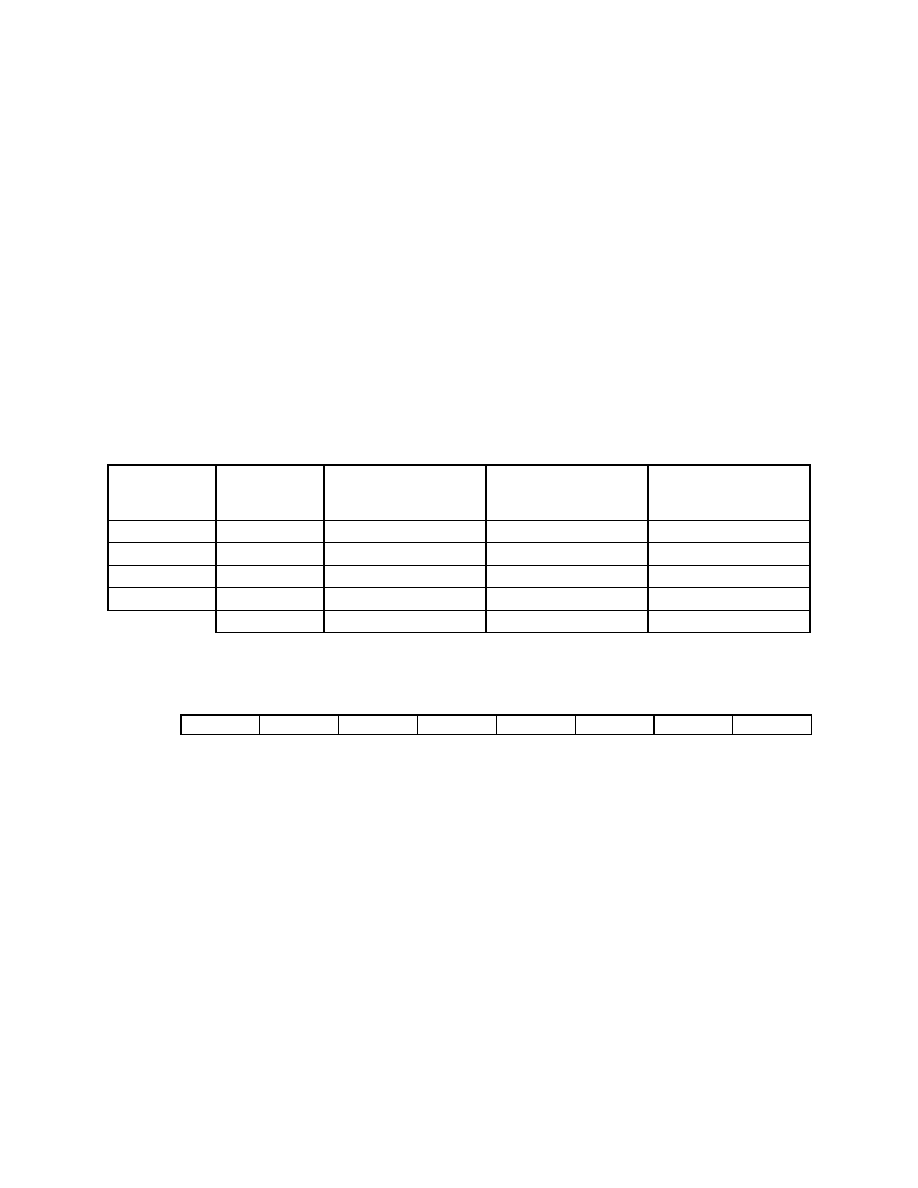- 您現(xiàn)在的位置:買賣IC網(wǎng) > PDF目錄45226 > MC68HC11D3CFB1 (MOTOROLA INC) 8-BIT, MROM, 3 MHz, MICROCONTROLLER, PQFP44 PDF資料下載
參數(shù)資料
| 型號: | MC68HC11D3CFB1 |
| 廠商: | MOTOROLA INC |
| 元件分類: | 微控制器/微處理器 |
| 英文描述: | 8-BIT, MROM, 3 MHz, MICROCONTROLLER, PQFP44 |
| 封裝: | QFP-44 |
| 文件頁數(shù): | 73/131頁 |
| 文件大?。?/td> | 1640K |
| 代理商: | MC68HC11D3CFB1 |
第1頁第2頁第3頁第4頁第5頁第6頁第7頁第8頁第9頁第10頁第11頁第12頁第13頁第14頁第15頁第16頁第17頁第18頁第19頁第20頁第21頁第22頁第23頁第24頁第25頁第26頁第27頁第28頁第29頁第30頁第31頁第32頁第33頁第34頁第35頁第36頁第37頁第38頁第39頁第40頁第41頁第42頁第43頁第44頁第45頁第46頁第47頁第48頁第49頁第50頁第51頁第52頁第53頁第54頁第55頁第56頁第57頁第58頁第59頁第60頁第61頁第62頁第63頁第64頁第65頁第66頁第67頁第68頁第69頁第70頁第71頁第72頁當(dāng)前第73頁第74頁第75頁第76頁第77頁第78頁第79頁第80頁第81頁第82頁第83頁第84頁第85頁第86頁第87頁第88頁第89頁第90頁第91頁第92頁第93頁第94頁第95頁第96頁第97頁第98頁第99頁第100頁第101頁第102頁第103頁第104頁第105頁第106頁第107頁第108頁第109頁第110頁第111頁第112頁第113頁第114頁第115頁第116頁第117頁第118頁第119頁第120頁第121頁第122頁第123頁第124頁第125頁第126頁第127頁第128頁第129頁第130頁第131頁

MOTOROLA
RESETS AND INTERRUPTS
MC68HC11D3
5-2
TECHNICAL DATA
COP is enabled, the software is responsible for keeping a free-running watchdog timer
from timing out. When the software is no longer being executed in the intended se-
quence, a system reset is initiated.
The state of the NOCOP bit in the CONFIG register determines whether the COP sys-
tem is enabled or disabled. In normal modes, COP is enabled out of reset and does
not depend on software action. To disable the COP system, set the NOCOP bit in the
CONFIG register. In the special test and bootstrap operating modes, the COP system
is initially inhibited by the disable resets (DISR) control bit in the TEST1 register. The
DISR bit can subsequently be written to zero to enable COP resets.
The COP timer rate control bits CR[1:0] in the OPTION register determine the COP
time-out period. The system E clock is divided by 215 and then further scaled by a fac-
tor shown in Table 5-1. After reset, these bits are zero, which selects the fastest time-
out period. In normal operating modes, these bits can only be written once within 64
bus cycles after reset.
Complete the following reset sequence to service the COP timer. Write $55 to CO-
PRST to arm the COP timer clearing mechanism. Then write $AA to COPRST to clear
the COP timer. Performing instructions between these two steps is possible as long as
both steps are completed in the correct sequence before the timer times out.
5.1.4 Clock Monitor Reset
The clock monitor circuit is based on an internal RC time delay. If no MCU clock edges
are detected within this RC time delay, the clock monitor can optionally generate a sys-
tem reset. The clock monitor function is enabled or disabled by the CME control bit in
the OPTION register. The presence of a time-out is determined by the RC delay, which
allows the clock monitor to operate without any MCU clocks.
Clock monitor is used as a backup for the COP system. Because the COP needs a
clock to function, it is disabled when the clocks stop. Therefore, the clock monitor sys-
tem can detect clock failures not detected by the COP system.
Table 5-1 COP Time-out
CR[1:0]
Divide
E/215
By
XTAL = 4.0 MHz
Time-out
–0/+32.8 ms
XTAL = 8.0 MHz
Time-out
–0/+16.4 ms
XTAL = 12.0 MHz
Time-out
–0/+10.9 ms
0 0
1
32.768 ms
16.384 ms
10.923 ms
0 1
4
131.072 ms
65.536 ms
43.691 ms
1 0
16
524.288 ms
262.140 ms
174.76 ms
1 1
64
2.097 sec
1.049 sec
699.05 ms
E =
1.0 MHz
2.0 MHz
3.0 MHz
COPRST — Am/Reset COP Timer Circuitry
$003A
Bit 7
654321
Bit 0
76543210
RESET:
00000000
相關(guān)PDF資料 |
PDF描述 |
|---|---|
| MC68L11D0CFB3 | 8-BIT, MROM, 3 MHz, MICROCONTROLLER, PQFP44 |
| MC68HC11D0CFN2R2 | 8-BIT, MROM, 2 MHz, MICROCONTROLLER, PQCC44 |
| MC68HC11D3CP1 | 8-BIT, MROM, 3 MHz, MICROCONTROLLER, PDIP40 |
| MC68L11D0CFBE2R | 8-BIT, MROM, 2 MHz, MICROCONTROLLER, PQFP44 |
| MC68HC711D3CFB | 8-BIT, 2 MHz, MICROCONTROLLER, PQFP44 |
相關(guān)代理商/技術(shù)參數(shù) |
參數(shù)描述 |
|---|---|
| MC68HC11D3CFB3 | 制造商:FREESCALE 制造商全稱:Freescale Semiconductor, Inc 功能描述:ROM-based high-performance microcontrollers |
| MC68HC11D3CFB4 | 制造商:FREESCALE 制造商全稱:Freescale Semiconductor, Inc 功能描述:ROM-based high-performance microcontrollers |
| MC68HC11D3CFN | 制造商:FREESCALE 制造商全稱:Freescale Semiconductor, Inc 功能描述:ROM-based high-performance microcontrollers |
| MC68HC11D3CFN1 | 制造商:FREESCALE 制造商全稱:Freescale Semiconductor, Inc 功能描述:ROM-based high-performance microcontrollers |
| MC68HC11D3CFN2 | 制造商:MOTOROLA 制造商全稱:Motorola, Inc 功能描述:Microcontrollers |
發(fā)布緊急采購,3分鐘左右您將得到回復(fù)。